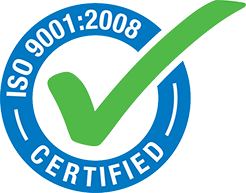Get your customers what they want, when they want it
You have your breakthrough, world-changing product. You have your website set up. You have some money to get you started. You’ve identified some customers that will get you going.
Congratulations. You have a startup. If you are struggling with International Laws on Import /Export, INCO terms ,need material to be brought from Overseas or need to send prototype overseas .. Customs and duties you are at the right place read ahead and connect to AFM for expert guidance and handholding..
And if your startup sells something to your customers, then you’re going to need to get a logistics process set up early on. What does that mean?
First, let’s define logistics. Your logistics process is how you move raw materials, components, and products between your suppliers ( Local & Overseas ) , your warehouses, and your customers. Logistics isn’t the same thing as supply chain in the way that Mumbai isn’t the Maharashtra . It’s an important part of it, but not it in its entirety. Logistics is the movement of goods; supply chain is that movement, but also the sourcing, cost of goods management, supplier relationship management, and more.
Here, we’re going to stick with logistics. And back to our original question, how did you get that small amount of inventory that you have on hand?

Starting up Your Startup
So you probably built prototypes of your product and then figured out how to get a handful to sell. Usually, that small amount of inventory that startups acquire are not acquired in a way that works for the long term. You likely expedited items and/or paid for higher cost items because they were closer and had shorter lead times.
If your product is a product that you make yourself, you might have made them in your garage or on your dining room table. Is that process scale-able?
When you set up your scaled logistics process, the logistics process that works for your startup commercially, you’re going to want to set it up with this mandate in mind:
Deliver to your customers what they want, when they want it — and accomplish that by spending as little money as possible.
Chances are the way that you acquired that initial small inventory isn’t going to get that done. To ensure that your startup will be fully functional and sustainable in a commercialized environment, you'll need to make sure you can deliver those customer orders that are about to flood in.
Logistics Priorities
You may not think about logistics on a regular basis, but you are impacted by it almost every day. Anytime you are a customer — whether it’s on Amazon or at Whole Foods (now, the same place!) or at the mall — you are either the beneficiary of a well-oiled logistics process or the victim of a logistics process that’s in dire need of lubrication.
What do you want when you buy something? You want it there fast (if it’s online) or you want it to be in stock (at a brick-and-mortar). And you don’t want to have to see the cost of logistics on the price tag (although it’s buried in there).
Those logistics priorities when you are the customer — speed and cost — are the same logistics priorities you need to consider when you’re setting up your startup’s logistics process. And the fact of the matter is that speed and cost are usually directly influencing each other. If you want something fast, it’s going to cost more. The post office (or any other shipper) is a great example. A first-class stamp may cost you only 46 cents, but your letter won’t reach your recipient for a week. Priority mail will get it there in two days, but it’ll cost you seven bucks.
And, if you want it there tomorrow, you can plunk down fifteen bucks.
That’s true for your startup’s logistics, too. Fast equals expensive.
Lead Time Management
Now that you’re planning your commercial logistics processes, you’re probably looking at suppliers that might not be next door. When you acquired that initial small amount of inventory to get you started, you might have purchased the raw materials or components you needed from retail stores near you, such as the local craft store or The Home Depot or even a wholesale supplier who agreed to sell you small quantities.
That means that your logistics process was:
- 1. Get into your car.
- 2. Drive to The Home Depot.
- 3. Drive home.
And while that is fast, it’s not very scalable, especially if you start sourcing from a low-cost manufacturing region in Asia, for example. You will learn that your startup has many lead times.
- There is the lead time that your customers think about when they order from you (“How long until I get this?”).
- There is the lead time that your customer service folks think about (“How long will it take our warehouse to ship this order?”).
- And there is the lead time that supply chain and logistics folks fret over (“How long will it take my supplier to deliver this to me?”).
When you're setting up your logistics processes, you need to consider all of these lead times & consult expert like AFM logistics who have proven experience in supporting Start up ecosystem . Because you’re going to want to balance cost and speed.
Remember, you can always call and take consultancy from our experts in AFM and we will be delighted to help .
Planning, Planning, Planning Our Mantra at AFM
Logistics planning relies on your ability to do demand planning and production planning. Demand planning means that you know your customers’ demands as well as, or better than, your customers. Production planning means that you know your internal lead times.
With the right logistics partner like AFM , you can plan for slower delivery from faraway suppliers, which means you sacrifice speed for cost. But in the early days of your startup, you don’t want to spend all your extra money (assuming there is any extra money) on expedited fees and air freight.
Because, yes, you can spend the money and compress your end-to-end lead time from nine weeks to half that or less. But if you plan correctly, you won’t have to.
Your Logistics Process & AFM’s expertise
AFM can plan your freight method. With the right demand planning and production planning, you can plan for the slower, cheaper method.
Your internal logistics. How quickly can your team process an order? Assume you have the product that’s been ordered in stock (because of your outstanding planning), it really shouldn’t take you any longer than 24 hours to get that order out the door.
Manage your customers’ expectations. Is your customer paying for the product to be delivered to them? That’s a traditional approach, but more and more free shipping and even same day shipping is crucial. Communicate with your customers and understand what they expect. Build those expectations into your logistics planning.
Remember, the entire basis of your logistics process is to deliver to your customers what they want, when they want it — but to spend as little money as possible getting that done.

